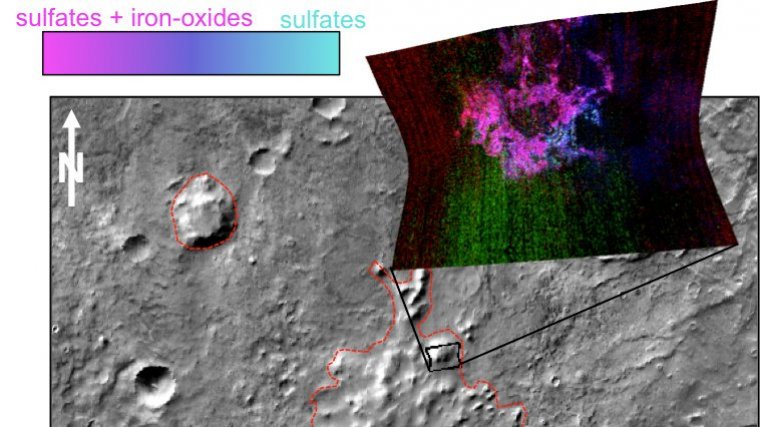| News / Space News |
Clues about Volcanoes Under Ice on Ancient Mars
NASA | MAY 5, 2016
Volcanoes erupted beneath an ice sheet on Mars billions of years ago, far from any ice sheet on the Red Planet today.

This graphic illustrates where Mars mineral-mapping from orbit has detected minerals that can indicate where a volcano erupted beneath an ice sheet. ![]()
The research about these volcanoes helps show there was extensive ice on ancient Mars. It also adds information about an environment combining heat and moisture, which could have provided favorable conditions for microbial life.
Sheridan Ackiss of Purdue University, West Lafayette, Indiana, and collaborators used the orbiter's mineral-mapping spectrometer to investigate surface composition in an oddly textured region of southern Mars called "Sisyphi Montes." The region is studded with flat-topped mountains. Other researchers previously noted these domes' similarity in shape to volcanoes on Earth that erupted underneath ice.
When a volcano begins erupting beneath a sheet of ice on Earth, the rapidly generated steam typically leads to explosions that punch through the ice and propel ash high into the sky.
Characteristic minerals resulting from such subglacial volcanism on Earth include zeolites, sulfates and clays. Those are just what the new research has detected at some flat-topped mountains in the Sisyphi Montes region examined with the spacecraft's Compact Reconnaissance Imaging Spectrometer for Mars (CRISM).
The Sisyphi Montes region extends from about 55 degrees to 75 degrees south latitude. Some of the sites that have shapes and compositions consistent with volcanic eruptions beneath an ice sheet are about 1,000 miles (about 1,600 kilometers) from the current south polar ice cap of Mars. The cap now has a diameter of about 220 miles (about 350 kilometers).
YOU MAY ALSO LIKE



